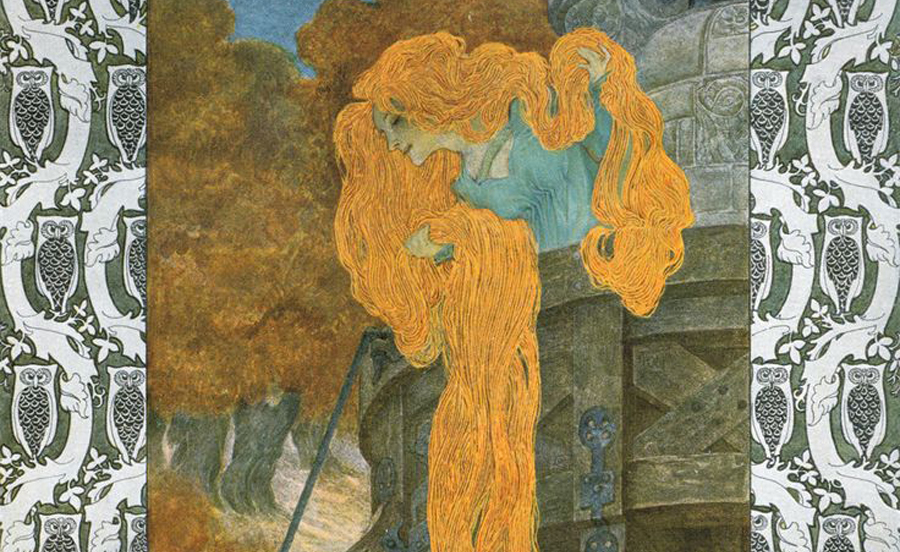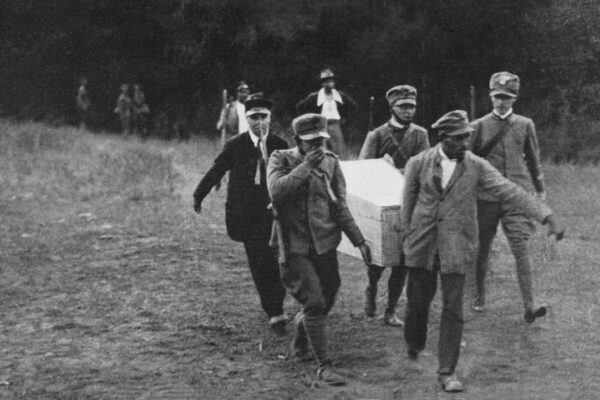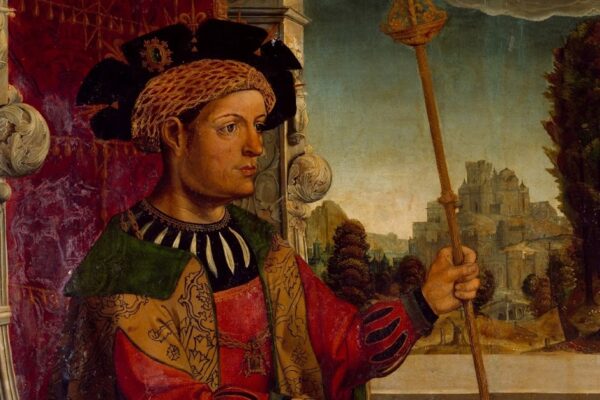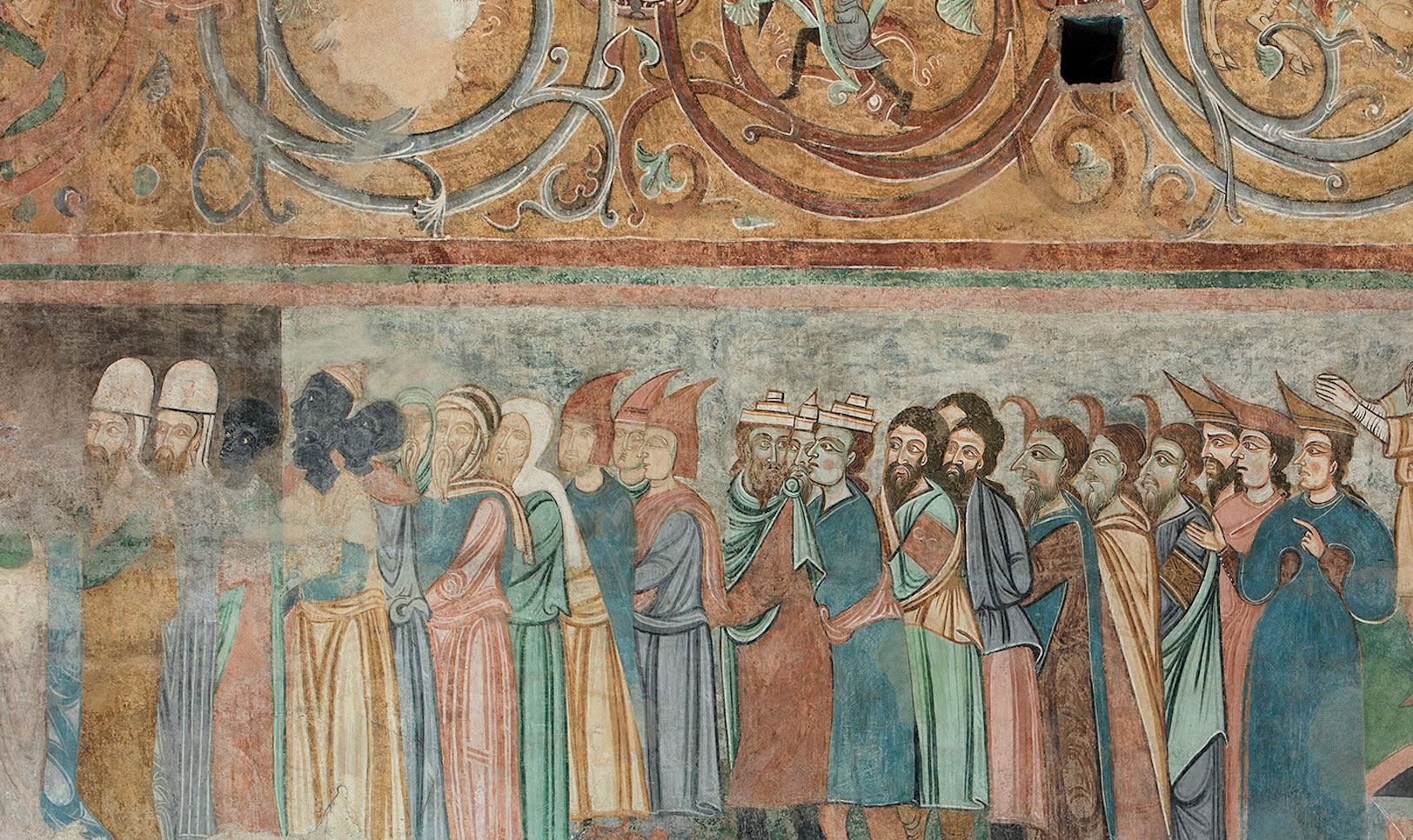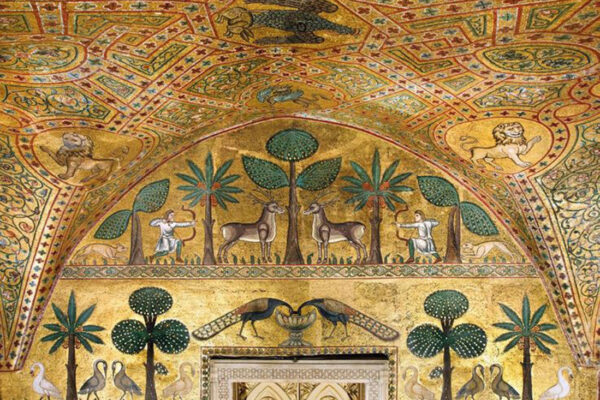The Relationship between Jews and Christians. Toward a Redefinition of the Ghetto
Index:
Marina Caffiero- Serena Di Nepi, Introduction: Redefining the Ghettos
Giuseppe Veltri, Exchanging Cultural Space: the Jewish Ghetto and the Italian Academies
Benedetto Ligorio, Ragusa. Un ghetto mercantile in Adriatico Orientale (1546-1667).
Serena Di Nepi, Relazioni oltre le mura: un processo ad Ancona all’epocatret dei ghetti (1555-1563)
Nourit Melcer-Padon, Free Jews in a Free Port City: Livorno, The City Without a Ghetto
Paolo Pellegrini, Uscire dal ghetto, tornare nel ghetto: le resistenze alle nobilitazioni di ebrei in Italia dopo l’emancipazione
In Italy, during the past two decades, Jewish history has pervasively captured the attention of researchers – even as historiography in this field lags behind that of other countries. Among the reasons of this increased interest is the fact that Jewish historiography has raised previously untapped thematic and methodological questions while becoming a relevant component in the development of general historiographical debates.
Even though a specialized academic division for Jewish Studies has never yet to be established in Italy, a fast-growing research in this area has contributed to the creation of a discipline in its own right, which can no longer be considered separate as if the “history of the Jews” did not intersect with other fields of Italian and European history. This welcomed intersection is bound to affect Italian and Jewish studies also outside of Italy as well.
In this volume we look at a broad set of issues from the perspective of a phenomenon that began in the peninsula: the ghetto.
From the perspective of the relations between the the segregated and those who imposed segregation, Jews and Christians – new research centered on the early modern period and on the period of reclusion and confinement (16th-19th centuries) represents a most interesting case of historiographical innovation.
The essays we present in this issue amply refer to this literature.
Records from many Italian archives so far neglected or only partially explored, prompt us to look at the history of the Jewish minority from a new perspective, challenging the pervasive interpretive paradigm of Jewish separation and insularity.
In Italy, the lack of communication between the study of the history of the Jews and history in general have made the Jews nearly “invisible” as agents in broader narratives. Their absence from mainstream historiographical debates has deprived research of the valuable insight that the analysis of the institutions, norms, and behaviors of minority groups, can offer to the historical reconstruction of the mainstream Christian society, with its cultural, social and political transformations in the peninsula and beyond.
On the contrary, the inclusion of the Jews in mainstream research helps understand new information and interpret a specific historical phenomenon. In fact, the institutions, norms, and practices of the Jews evolved and were transformed in close interaction with mainstream institutions, to the point of conditioning one another rather than being unilaterally conditioned.
Today, however, we are witnessing a reversal of this course of analysis and a real “historical revision,” which instead, seeks to oppose the erasing of Jewish history in national historical narratives. Models that were previously considered unchangeable are questioned and scholars have begun to examine Jewish history beyond its supposed isolation. In this new course, research has begun to contextualize the history of the Jewish minority within that of larger social changes, including the implementation of laws by civil and ecclesiastical institutions and the situations these norms addressed.
For example, the inclusion of the Jews in the study of the history of finance, economy, and labor, has productively contributed to expand the horizon of general historical debates. The range of Jewish activities, considerably broader than that generally referred reductively by historians and economists as moneylending, is now increasingly taken into account in order to contribute to a comprehensive study of the economic dynamics that shaped European events.
The deconstruction of the most enduring stereotypes connected to the economic activities of the Jews has produced a new assessment of the crucial role of networks of national and transnational relations; of the interdependence of Jewish and Christian activities and initiatives; as well as of the ongoing negotiation between minority and institutional powers. These new directions in research have led to the emergence of a wide range of models that debunk the widespread stereotype of Jewish passivity and voluntary submission to the rules, laws, and prohibitions imposed by the world of the majority.
Such observations bear not only on the field of economic history but also of social and cultural history. Among many common assumptions challenged by these new perspectives, is the representation of the Jewish communities as monolithic and homogeneous social bodies.What emerges from new studies is that the Jewish communities in Italy, already diverse both ethnically and linguistically, had a highly hierarchical structure in which affluent families held political and administrative roles that were largely precluded to the population of more modest extraction. Much work still needs to be done on the economic stratifications of the Italian Jewish world and the conflicts that arose from it. This work has recently been undertaken for several urban centers, including Venice and Rome.
Following this course of innovativ research, it would be beneficial not to limit research to the role of the Jews outside of the ghetto, but also survey the Christians who frequented the ghetto and were part of daily life within its walls. A comparative approach must, of course, include the wider Christian society in which the ghettos were contained, and from which the dynamics that contributed to shaping their internal structure derived.
For example, it would be simplistic and ineffective to examine the history of the Roman Jews without comprehensive references to the history of the city, its institutions and normative systems, and the history of the Church and the papal power. On the contrary, it would be essential to examine the ways in which the Christians, with their institutions and laws, marked life in the ghetto by imposing transformations and negotiations on the Jews.
The effort to bring to light the dynamics between the ghetto and the city is leading historians to examine those fields in which interaction was more frequent. For example, the notary and judicial archives indicate that Jews sometimes used Christian lawyers to resolve internal problems and that sovereigns and pontiffs held in high regard influential members of the Jewish community and often sought rabbinical opinions on theological questions.
Of course, these relations must not obscure the confrontation and tension, as well as the processes of control, discrimination, persecution, and repression that increased over time between the 16th and 19th centuries. The cross-analysis of data held in administrative, notary, judicial, and inquisitorial sources, examined in relation to the theoretical questions raised by jurists and rulers in that period, makes it possible to integrate Jewish history into the general history of Europe and its major processes of transformation.
Moreover, the study of the relation of Jews to the larger society, proves very important to the research on heresy, the circulation, consumption and censorship of books, practices of magic and witchcraft, emotional and sexual exchanges, international and intercultural influences, as well as the the construction of a “lexicon of prejudice” and discrimination, well before any discourse on rights and citizenship, etc.
Overcoming the paradigm of insularity and unscalable walls – which the ghetto symbolizes – allows us to identify systems of exchanges, interactions, and reciprocal influences on shared spaces, whether physical or cultural.
Above all, it gives us the opportunity to escape from the historiographical ghetto, which has prevented us from effectively interconnecting general European and world history with the history of the Jews. Although the ghetto walls have never succeeded in creating a total separation, in the historical narrative the idea of the ghetto as absolute segregation has come to dominate and bury all other perspectives. The history of the Jews and their historical relationship with Christians is, in this sense, a central chapter in a more general history, which is today more present than ever, as we confront the challenges of coexistence among different religions and cultures, and various forms of polarization vis-à-vis the status of minorities.
Clearly, this step toward a more integrated historiography, should not lead to an idyllic representation of three centuries of segregation, but rather to construct a more accurate portrait of this period, shedding light on the chiaroscuro of everyday life that flowed through the walls and rethinking both negative and positive stereotypes. It is not a story of tears or dreams, but simply a plausible reconstruction of a narrative that needs to be loosen from simplification.
The 500th anniversary of the Venice ghetto (1516) offered an opportunity to resume the discussion on the Italian ghettos in light of new historiographical perspectives.
The word “ghetto,” often used inappropriately and applied to various contemporary realities – the Nazi ghettos, the American black ghettos, immigrant ghettos – offers an element of reflection on how these derived uses could produce misleading information by invoking a biased historical projection. The risk is that the sociological and ahistorical use of the word “ghetto” as a global metaphor, charged with an intrinsically negative meaning in time and space, erases the specificity of its history and dynamics.
Even the chronology of the ghettos is subject to revision and must be inserted into the broader political, social, economic and cultural processes of this long era, demonstrating how segregation in ghettos, from its origins, has been a multifaceted process that is impossible to summarize in a set of dates or paradigmatic models.
Central to the classic definition of ghetto is the Papal decision of closing the Roman Jews into a “seraglio” in 1555. This event determined the success of the “ghetto system” in central and northern Italy more than the Venetian model of 1516.
It is also important to note that through the 17th century and part of the 18th, new ghettos were created with distinct characteristics and varied geopolitical and institutional situations. Notwithstanding some local variations in both internal and external standardization and enforcement, the organization of the claustri was based on a series of generally shared procedures: opening doors only during daytime hours, identification badges for the Jews, the prohibition of medical practice on Christian patients and of having Christian servants, and restrictions on economic activity – if not already reduced to simple moneylending.
Conversion remained the primary objective, but in the process and in order to facilitate its achievement, Jews were granted a form of hospitality that was full of ambiguities and contradictions. It is precisely because no ghetto was exactly like any other, that the plurality of this history should be emphasized.
Recent research has clearly demonstrated how internal and administrative mechanisms, economic and social structures, professional options, the marriage practices, means of exchange with foreign countries, and the promulgation of rulings along with their practical application varied significantly from place to place, from state to state, and from time to time.
The history of Italy, with its political fragmentation, played an important role in solidifying these distinctions. Residing outside of ghettos, illicit relations of any kind among Jews and Christians, travel, movement, large-scale trade, and the circulation of suspicious and prohibited books were all made possible by the distinct conduct of each state power in the territories of its jurisdiction where Jews resided. In the same way, the discrepancies reported by the Roman Inquisition, local and ecclesiastical authorities, indicate that there was a wide range of attitudes toward transgression: cases that in one places were overlooked, in another city could be severely punished.
Consequently, a history of the ghettos and Italian Jewish culture must be considered as a conglomerate of diverse experiences that are in some cases predominantly local and in others, part of larger Mediterranean and global histories.
The Italian ghettos, just like the Italian Jewish communities, were quite different from one another: they were established or suppressed at different times and in various historical and political contexts, characterized by specific structures and institutions – and by a different relation with the ruling power. Rome, Venice, Florence, and Turin present characteristics that are difficult to compare; to the same token, Livorno, the city without a ghetto, could have been seen as a ghetto of its own, as shown by one of the contributions to this monograph.
Some shared paradigms, especially in the organization of the enclosures and occupation of public space, can facilitate comparisons among different communities.
Such comparison, however, must take into account that both the set of norms and their actual application varied significantly from one locality to another, and often also varied within the same locality over time.
Once again, it is Italian history in its complexity, with its political and institutional fragmentation, that needs to be considered when undertaking a new and complex history of the ghettos, articulated geographically and chronologically.
Redefining the ghetto/segregation paradigm as a plural reality and questioning the classical historiographical model of the ghetto as an absolute space of separation and isolation, makes it possible to fully incorporate Jews into the general course of the history of Italy in the early modern era.
At the same time, the circulation of people, objects, and books —and, therefore, ideas— maintained a constant flow of communication among the Jews of Italy and “the others” (whether Christian or Jewish). From their houses in the ghettos, from the fairs, markets, and ports of the Italian peninsula, they built relationships with each other and took leading roles in the major international networks of Sephardic diasporas, in the east as in the west.
In this sense, the study of ghettos may require thinking in terms of national context even in pre-unification Italy, looking beyond the fragmentation of Italian Regional States in the Early Modern Age. In fact, Jews in the ghettos, with all the differences that research on local communities has revealed, often found themselves at the center of political and diplomatic conflicts that spread well beyond the city walls.
Despite being at an early stage of research, works on the creation of Jewish libraries, Mediterranean and Atlantic trade, intellectual production, mobility, and travel; research on the Universities of Padua and Ferrara which welcomed Jewish students from all over Europe (and thus also from ghettos in the peninsula), reveal the profile of a community that defies a local scale.
Heading toward a comprehensive exploration of the dynamics of segregation and the problems associated with its definition, this monographic issue proposes an inquiry into a variety of ghetto experiences according to a comparative perspective and to the diversity of legal, social, cultural, and institutional situations.
Through the presentation of a series of case studies that span chronologically from the 16th to the 19th century and beyond, we propose to reconstruct the evolution of the ghetto as a multifaceted phenomenon. In particular, the intention of this work is to “come out of the ghetto” by analyzing the relationships between the inside an the outside and the mutual representations of the Christian and Jewish populations, while simultaneously “entering the ghetto” by revealing how Christian normativity conditioned Jewish practices and strategies, to the point of forcing them to re-enter the ghetto even after the emancipation.
This theme compels us to reflect on the crucial question of citizenship, which is often defined without adequate consideration of how it was affected by the exercise of moneylending. Above all, it is important to note that the worsening of the condition of the Jews overtime, together with the supposed “nature” of the “infidel” (considered incapable of true faith), led to their rejection as members of the civitas. Rejection applied to those whose behavior by nature was considered unworthy of respect, in economic terms or otherwise, based on trust, credibility and reliability. Undoubtedly, the Jews did not belong to the legitimate society of those who operated for the “common good”. Theirs was a membership that was at best defined as “imperfect.”
Trust and reliability are terms which refer to fides, a notion to which infidels or perfidi were necessarily alien. The Jews were relegated to these categories, indicating their incapacity to find true faith while persevering in their blind error. Thus, the lexicon of the fides and trust, slipping from the theological and religious ground to the economic and political, originated the idea of the market as a system of credit and bonds of trust in which only a few groups could be involved. By the same token, this definition decreed the non-credibility and exclusion of others who were not worthy of the faith because they lacked it, and who were therefore imposed upon a ill repute.
In the political sphere, this same language of faith established the criteria for social inclusion and the right to citizenship. Those of bad reputation or who were deemed unreliable were excluded from it. They were viewed as intrinsically not capable – just like theJews because of their religious obstinacy (perfidia) – of partaking in the rules of the civitas.
The controversial debate on Jewish citizenship cannot prescind from a full appraisal of theology and canon law and from the understanding that no common rule could emerge from the theological apparatus. In fact, the concession of privileges was negotiated with the authorities and granted arbitrarily in ways that varied at different times and in different places.
The issue of citizenship remained unresolved until the 19th century when, through the emancipation and granting of civil and political rights, the wealthiest Jews sought to integrate into the mainstream population by embracing their public ceremonies and symbols (as we’ll see in the essay by Paolo Pellegrini).
External relations, internal networks, mobility, and relationships with institutions are some of the focal points of the investigations offered here. In this perspective, Giuseppe Veltri’s unprecedented exploration of the presence and participation of educated Jews in the Academies deals with Jewish culture in Italian ghettos, and the interconnections with contemporary Christian intellectuals.
Serena di Nepi reconstructs a controversy that took place in the mid-16th century in Ancona regarding an annulled betrothal. She analyzes the relations that were activated in terms of different legal competencies: the rabbinical authorities of different Italian communities and the highest pontifical magistrates dealing with the question of matrimony.
Benedetto Ligorio traces the process of creation of a ghetto, analyzing the case of the Ragusa precinct, which until now was known only in terms of commerce. He develops a useful comparison between the official documents for the establishment of Jewish enclosure in Venice (1516), Ragusa (1546), and Rome (1555), revealing similarities as well as precise ideological and cultural distinctions.
Nourit Melcer-Padon then examines the link between the urban development of Livorno, the free port and the city without a ghetto, and the status of Jews as citizens. On the basis of original research, this work questions the dynamics of discrimination, conversion, and integration.
Finally, Paolo Pellegrini focuses on the ways in which a mindset of separation lingered in the Christian and Jewish societies well beyond the 19th century’s emancipation process.
We hope that the questions and fields of inquiry presented in this volume, many of which have seldom been explored, can, together with others, contribute to a historiographical redefinition of the notion of the ghetto, emancipated from rigid interpretative models.


